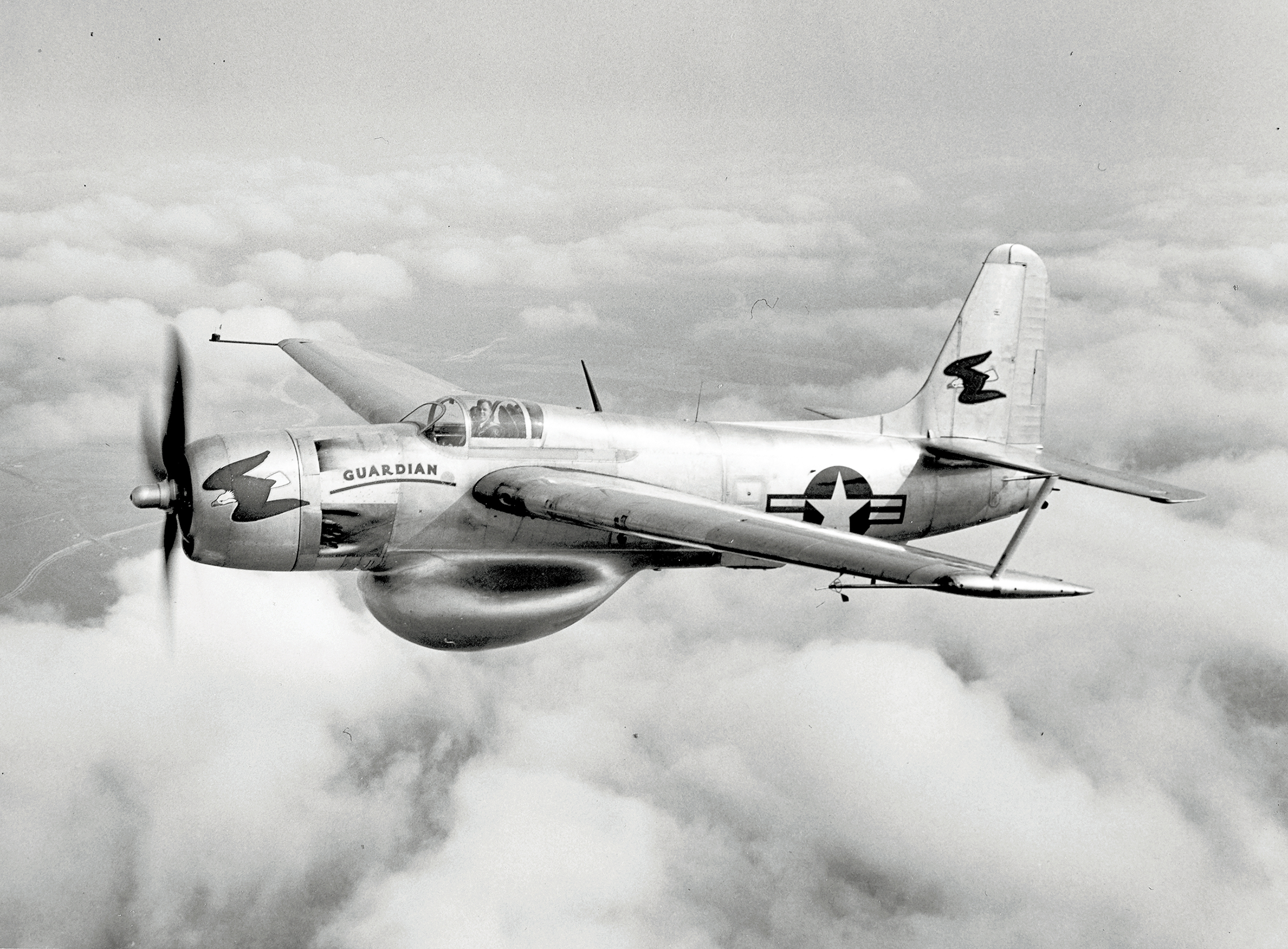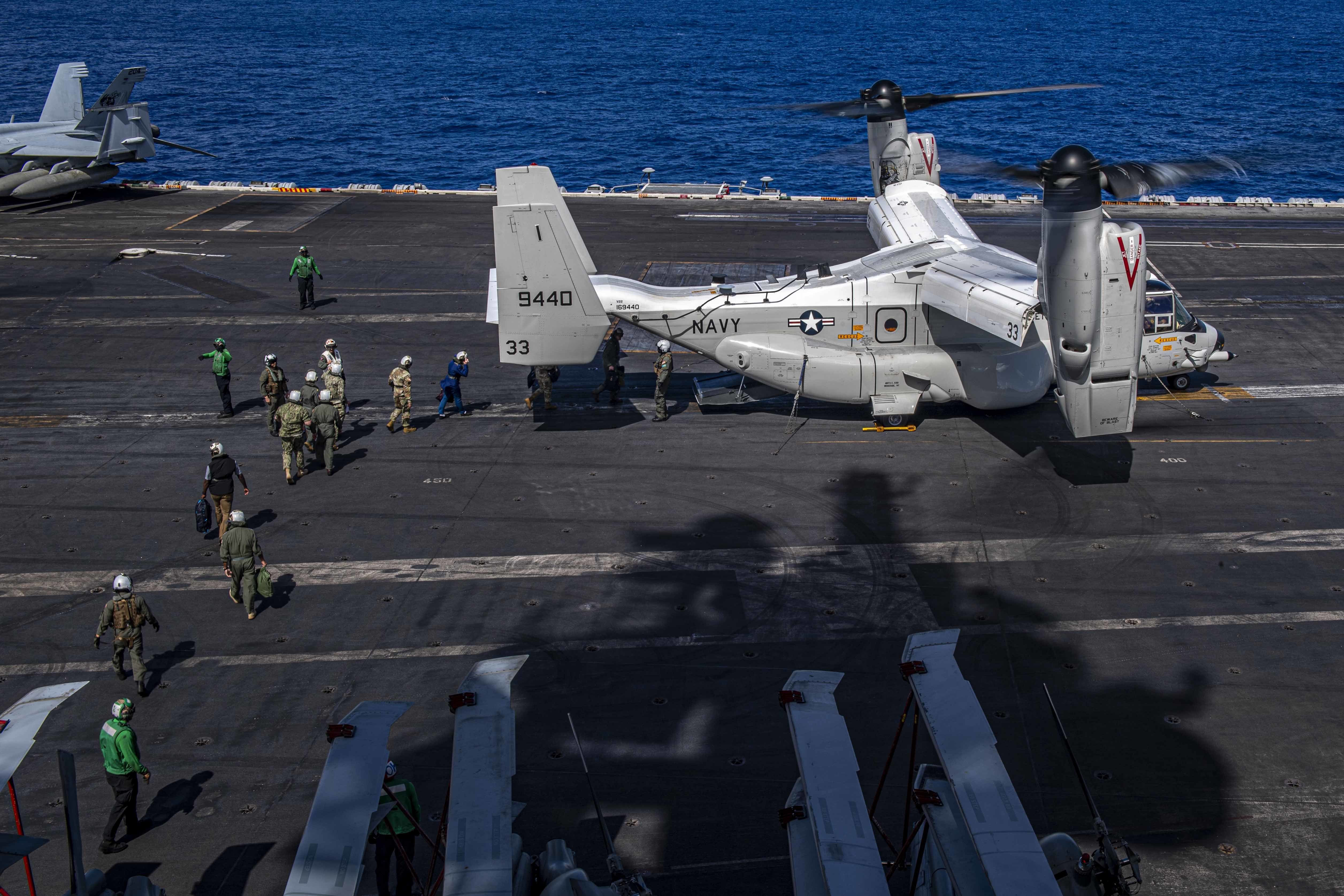Military Aircraft Designations - This A-3B Skywarrior was produced with a stronger airframe, more powerful engines, and a slightly larger wing area than the "A" model. It was modified for photo-surveillance operations by adding a camera package to the weapons bay. It was later converted into a permanent testbed for Harpoon guidance systems and cruise missiles, with a large antenna dome attached to the nose and wingtip jammer pods, earning it the nickname "Snoopy" and the designation NRA-3B.
The aircraft designation system currently used by all branches of the armed forces is called the "Mission Design Series" (MDS) and uses combinations of letters and numbers to denote some basic facts about a given aircraft. When you first encounter the "F/A-18E/F" representing the Super Hornet, you might think it's not just for cryptanalysts - but the good news is that it's mostly logical and perfectly decipherable.
Military Aircraft Designations

The easiest way to start is to remember this: the only thing all aircraft designations have in common is a dash. Whether the aircraft is a P-8A, EA-18G or F/A-18E/F, the designation always includes a dash. If you use this as a starting point, you'll have a solid reference to start breaking this code.
A 10 'warthog' Thunderbolt Ii
The first letter to the left of the dash tells you one of two things: the type of aircraft or the main target. If the aircraft is a special type, such as a glider or a helicopter, the first letter to the left of the hyphen is one from this list:
If it is not one of these types of aircraft, it is understood to be a normal fixed wing aircraft.
The primary mission is the primary purpose of the aircraft and is identified by one of the following letters:
The first letter to the left of the dash indicates the type or main mission of the aircraft, and the two lists do not overlap (except in one case) when they can be combined and translated accordingly (keeping in mind that the letter used indicates the type or mission). The little problem is that the letter "S" is used and used for both type (spaceplane) and mission (anti-submarine), but spaceplanes are rare and usually obvious.
The Air Force Wants Your Help Naming Its New B 21 Bomber
The letter or letters (if any) preceding the type or mission is the mission modifier. Specifies a modified aircraft mission or multiple missions:
These letters can be combined with a type or mission indicator to learn more about what the aircraft will be used for. The SH-60B is an anti-submarine warfare helicopter and the EA-6B is a fixed-wing attack aircraft specifically configured for electronic missions. In the case of the F/A-18C/D, the two letters ("F" and "A") are separated by a slash, meaning that "F" is not a mission modifier, but is treated the same as "A", so this the plane has both fighter and strike missions. Equally easy to use.
Sometimes the mission modifier changes the name. An example of this is the EA-6B. Of course, the A-6 Intruder (now decommissioned) could not be missing. It is (as indicated by the "A" to the left of the dash) an attack aircraft. This original design was later significantly modified for electronic warfare missions, so it was redesigned as the EA-6 and renamed the Prowler.
The other space to the left of the hyphen (the third) is sometimes (rarely) taken up by a letter called the status prefix, as follows:
Navy's V 22 Achieves Initial Operational Capability Designation > United States Navy > Display Pressreleases
Right to the right of the hyphen is the project number. This number means that the aircraft is of a certain type or has a certain design for the primary mission. Although they are generally numbered sequentially - for example, the P-2 Neptune was designed for a patrol aircraft approved earlier than the P-3 Orion - these scenes have many gaps and many exceptions.
A series of letters appended to the project number indicate that the basic design of the aircraft has been modified in some significant way. The aircraft in its original design was considered an "A" series. The first fix is "B", the next is "C", and so on. "I" and "O" are not used because they can be confused with one and zero. The F/A-18C/D is a special case as there were actually two different versions of the Hornet in service; One had one seat and was labeled the "C" version, while the "D" version had two seats. Since both are in use, you'll often see them as "C/D" when referring to them in general.
Note: The current tri-service aircraft designation system has only been used since 1962, so if you're reading about World War II and earlier aircraft, for example, the designations won't be the same. The previous designations will be covered in the upcoming "Bluejackets Handbook" column.
LCDR Slicer USA Gordon England Department of Professional Naval Literature at the Naval Institute. Among his many books is The Bluejacket's Manual (Naval Institute Press), Every American Every Navy Soldier is given C for Cargo, F for Fighter, and H for Helicopter... Are the aircraft names as simple as they sound? Here's a primer on how thousands of aircraft got their names, including Boom's XB-1.
F 22 Raptor > Air Force > Fact Sheet Display
Naming an aircraft is a secret code with some hard logic, a helping hand in aviation history, a bit of magic and a bit of patriotism. Breaking the code is hard. Many countries, manufacturers and armed forces have their own methods.
Commercial aircraft and general aviation aircraft (used for private and recreational flights) are generally identified by manufacturer names, brands, and model numbers. Examples include the Bombardier CRJ-900 produced by Canadian Bombardier Aerospace. The acronym CRJ stands for aircraft type (Canada Regional Jet) and 900 stands for its model. A similar model is used in almost all civil aircraft, but manufacturers skip the numbers and use generous creative license.
Another typical aviation example is the Cessna 172 Skyhawk. Launched in 1955 and manufactured by the Cessna Aircraft Company, it is often identified by its name alone, the Skyhawk. But the Cessna 172 Skyhawk has a different identity as a military aircraft in service with the US Air Force and Army, where it is known as the T-41 Mescalero (more on that below).

When it comes to military aircraft, most countries use their own marking systems. In 1962, the U.S. Armed Forces consolidated its system across all branches to form the Tri-Service Aircraft Designation System. Each aircraft is marked with a letter indicating its purpose, whether flown by the United States Air Force, United States Navy, United States Marine Corps, United States Army, or United States Coast Guard.
U.s. Navy And U.s. Marine Corps Aircraft Squadron Designations
Each aircraft has a base designation consisting of a capital letter indicating the aircraft's mission, such as T for trainer, followed by a dash and a number. The second mission letter is used when the aircraft has a modified target and the name can also be used. The aforementioned T-41 Mescalero is a trainer used by the US Air Force for student pilots. There are four versions: T-41A, T-41B, T-41C and T-41D. In keeping with the military tradition of drawing the names of Native American tribes, it is named after the Mescalero Apache tribe of New Mexico.
No wonder X represents experimentalism. Most people recognize the X-1 as the plane that broke the sound barrier in 1947 by Chuck Yeager. NASA also uses the X designation for its own research aircraft.
An example of the use of the three service designation system is the UV-18B Twin Otter which flies at the United States Air Force Academy as a parachute cadet. U stands for Utility and V stands for Staff Transport while 18 stands for Model Number and B for Version. In the civilian world, it is identified by the name of the manufacturer DeHavilland DHC-6 and simply as the twin otter. As the name suggests, it has two engines.
When it comes to Boom's XB-1, it's easy to decipher our own code. X is an experiment, B is a boom, and 1 is the first. We gratefully acknowledge Chuck Yeager's X-1 achievements during the naming process.
Wt Live // Images By Onealpha_
December 26, 2022 / Boom Supersonic 2022 Year Round August 15, 2022 / How Boom Supersonic Team Members Developed a Passion for Aviation November 15, 2021 TIME Boom is one of the innovations that make the world better, smarter and more fun
Copyright © 2022 Boom Supersonic. All rights reserved. Except as expressly permitted, images or other content displayed on this website may not be copied, reprinted, republished, modified or distributed in any form without the express written consent of the copyright owner. All rights reserved. Except as expressly permitted, images or other content displayed on this website may not be copied, reprinted, republished, modified or distributed in any form without the express written consent of the copyright owner.
Military drone range, laser range finder military, military range bags, military range targets, long range military radio, military radio range, military range finder, military long range binoculars, range rover military discount, military range rover, range of military drones, military range bag

0 Comments